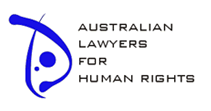|
| |
 |
| |
Download
factsheet
Australia’s visa system
In September 2001, the Australian government introduced
a new visa regime for asylum seekers [1].
There are 9 different visas which apply specifically to asylum seekers
and they are divided into two major categories: onshore and offshore.
Onshore asylum seekers
There are 2 types of ‘Protection Visa’
available to onshore asylum seekers:
Protection (subclass 866)
Criteria: Applicant is a refugee, arrived
in Australia with valid travel documents and within Australia’s
migration zone, and did not spend more than 7 days in a country where
could have sought protection on the way to Australia.
Rights: Permanent
visa, access to government settlement services and welfare system,
family reunion, right to return if leave Australia.
Temporary Protection (subclass 785)
Criteria: Applicant is a refugee, arrived
in Australia without valid travel documents, or spent more than 7
days in a country where could have sought protection on the way to
Australia.
Rights: Temporary visa for 3 years, limited
access to welfare system.
Offshore asylum seekers
There are two types of visas available to asylum seekers who make
a claim for refugee status offshore, namely:
- Refugee; and
- Humanitarian Visas.
For all of these except the Secondary Movement
Offshore Entry (Temporary) Visa the applicant must be outside Australia.
Refugee (subclass 200)
Criteria: Applicant suffers persecution
in home country and is not living there, or is sponsored by a family
member who is an Australian citizen or permanent resident and has
been given a Refugee Visa. Applicant has not spent more than 7 days
in a country where could have sought protection.
Rights: Permanent
visa, access to government settlement services and welfare system,
family reunion, right to return if leave Australia.
In-country Special Humanitarian (subclass
201)
Criteria: Applicant suffers persecution
in home country and is still living there, or is sponsored by a
family member who is an Australian citizen or permanent resident
and has been given an In-Country Special Humanitarian Visa.
Rights: Permanent
visa, access to government settlement services and welfare system,
family reunion, right to return if leave Australia.
Global Special Humanitarian (subclass
202)
Criteria: Applicant is subject to substantial
discrimination, amounting to gross violation of human rights, in
the applicant's home country and is not living there, or is sponsored
by a family member who is an Australian citizen or permanent resident
and has been given a Global Special Humanitarian Visa, a Protection
Visa, or a Special Assistance Visa. Since leaving home country,
the applicant has not resided in another country where could have
sought protection for more than 7 days.
Rights: Permanent
visa, access to government settlement services and welfare system,
family reunion, right to return if leave Australia.
Emergency Rescue (subclass 203)
Criteria: Applicant suffers persecution
in home country, and is living there or in another country, or is
sponsored by a family member who is an Australian citizen or permanent
resident and has been given an Emergency Rescue Visa.
Rights: Permanent
visa, access to government settlement services and welfare system,
family reunion, right to return if leave Australia.
Woman at Risk (subclass 204)
Criteria: Applicant
is a woman living in country other than home country, and is subject
to persecution or registered by UNHCR as being of concern, or is
sponsored by a family member who is an Australian citizen or permanent
resident and has been given a Woman at Risk Visa. Since leaving
home country, the applicant has not resided for more than 7 days
in another country where could have sought protection.
Rights: Permanent
visa, access to government settlement services and welfare system,
family reunion, right to return if leave Australia.
Secondary Movement Offshore Entry (Temporary)
(subclass 447)
Criteria: This is available to asylum
seekers whose first place of landing in Australia is “an excised
offshore place” (Christmas Island, Ashmore or Cartier Islands,
Cocos Islands, sea installation or resource installation). They
must be subject to persecution in their home country, or substantial
discrimination amounting to gross violation of human rights in their
home country, or a woman subject to persecution or registered by
UNHCR as being of concern. There must be no alternative country
available for protection. The Applicant must be outside Australia
at the time the Visa is granted.
Rights: Temporary
visa for 3 years, and can apply for successive TPVs every three
years after this. Not entitled to government settlement assistance
or family reunification, only single entry, cannot return if leave
Australia.
Secondary Movement Relocation (Temporary)
(subclass 451)
Criteria: Applicants must be outside their
home country and outside Australia. They must be subject to persecution
in their home country, or substantial discrimination amounting to
gross violation of human rights in their home country, or a woman
subject to persecution or registered by UNHCR as being of concern.
There must be no alternative country available for their protection.
Rights: Temporary
visa for 5 years, and can apply for permanent protection visa after
four and a half years. Not entitled to government settlement assistance
or family reunification, only single entry, cannot return if leave
Australia.
[1] Migration Amendment Legislation
(Excision from Migration Zone) (Consequential Provisions) Act 2001,
Schedule 2; Migration Regulations, Part 4.
|
|



